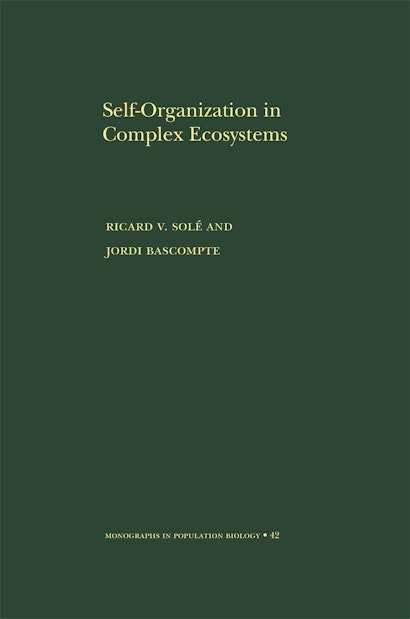Can physics be an appropriate framework for the understanding of ecological science? Most ecologists would probably agree that there is little relation between the complexity of natural ecosystems and the simplicity of any example derived from Newtonian physics. Though ecologists have long been interested in concepts originally developed by statistical physicists and later applied to explain everything from why stock markets crash to why rivers develop particular branching patterns, applying such concepts to ecosystems has remained a challenge.
Self-Organization in Complex Ecosystems is the first book to clearly synthesize what we have learned about the usefulness of tools from statistical physics in ecology. Ricard Solé and Jordi Bascompte provide a comprehensive introduction to complex systems theory, and ask: do universal laws shape the structure of ecosystems, at least at some scales? They offer the most compelling array of theoretical evidence to date of the potential of nonlinear ecological interactions to generate nonrandom, self-organized patterns at all levels.
Tackling classic ecological questions—from population dynamics to biodiversity to macroevolution—the book’s novel presentation of theories and data shows the power of statistical physics and complexity in ecology. Self-Organization in Complex Ecosystems will be a staple resource for years to come for ecologists interested in complex systems theory as well as mathematicians and physicists interested in ecology.
Ricard V. Solé is Professor of Research at the Catalan Institute for Research and Advanced Studies in Spain, head of the Complex Systems Lab at Universitat Pompeu Fabra in Barcelona, external professor at the Santa Fe Institute, and Senior Member of the NASA-Associate Center of Astrobiology. His recent books include Signs of Life: How Complexity Pervades Biology. Jordi Bascompte is Associate Professor of Research at the Spanish Research Council, and a Visiting Scientist at the National Center for Ecological Analysis and Synthesis at the University of California, Santa Barbara. He was awarded a European Young Investigator Award, and is coeditor of Modeling Spatiotemporal Dynamics in Ecology.
"Self-Organization in Complex Ecosystems is an excellent book, and could very well be the very best of its type."—Timothy F. H. Allen., BioScience
"There is no book like this in the canonical line of textbooks on theoretical ecology: Self-Organization in Complex Ecosystems views ecosystems from the perspective of self-organization and the emergence of their large-scale complex features. It does this from a largely mathematical perspective and, surprisingly, draws on several methods from theoretical physics."—Stefan Bornholdt, TRENDS
"Throughout the volume, the authors provide examples of rigorous mathematical treatment and ecological problems of local and global significance using concepts and tools of statistical physics. These examples, as well as a solid background on the applicability of fundamental laws of physics in ecology, could provide excellent supplemental formation for theoretical ecology courses."—Igor Linkov, Quarterly Review of Biology
"A great book. Self-organization in Complex Ecosystems brings a whole new set of tools from statistical physics into the realm of studying ecological systems. Most, if not all, of these tools have been floating around the ecological literature for quite some time, in great part due to these authors themselves, but this book is the best overview yet. It will soon become the foundation for many courses and a major resource sitting on ecologists' bookshelves."—Will Wilson, Duke University
"This book is an outstandingly good summary of where we currently stand in the field of ecology. It draws together, in a clear and synoptic way, a large variety of new ideas and supporting them where possible and appropriate by data."—Robert M. May, University of Oxford

